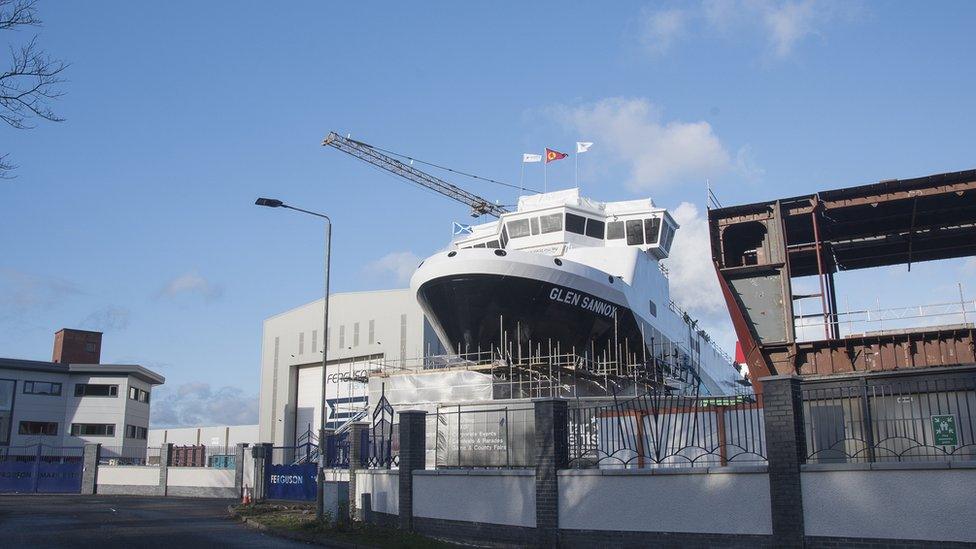Shipyard turnaround is 'most challenging in UK'
- Published
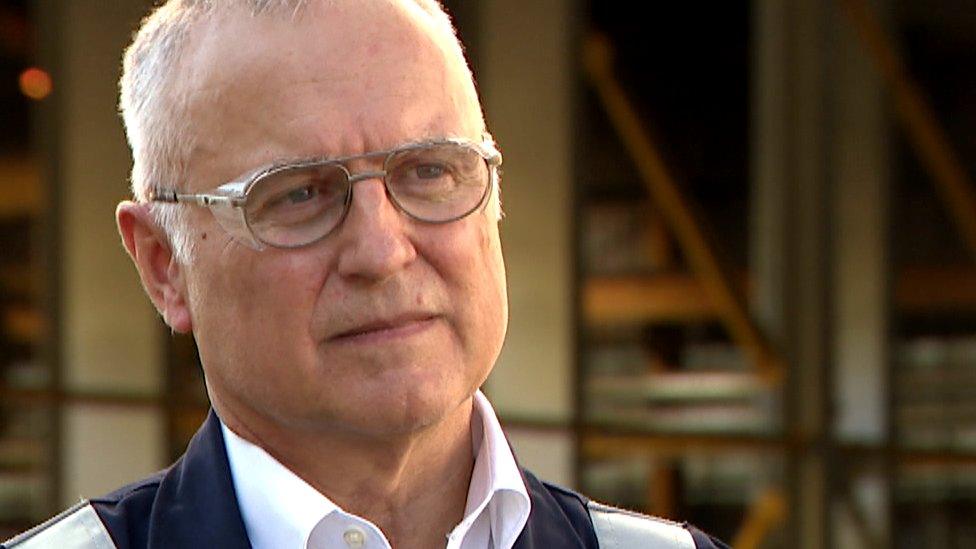
Tim Hair is paid up to £60,000 a month as turnaround director at Ferguson Marine
Ferguson Marine's shipyard is probably "the most challenging business turnaround in the UK", says Tim Hair.
Mr Hair is the 'turnaround director' at the Port Glasgow yard - a title that is neither manager nor chief executive.
He insists this is because its requires a specific set of skills for which he is being paid roughly £40,000 most months.
"This is a very intensive place," he says. "It's a functioning shipyard, but there is still a lot of work to do."
A Freedom of Information Act inquiry showed his pay for this work recently rose to £60,000 a month.
This day rate was benchmarked against the going rate, he tells me, and it's mid-range for a 'turnaround' specialist.
Mr Hair was recruited by the Scottish government when it took the yard out of administration more than two years ago.
He was given instructions to stabilise operations, deliver on five ships - two of them large CalMac ferries and three of them much smaller - and then to prepare the yard for a sustainable future.
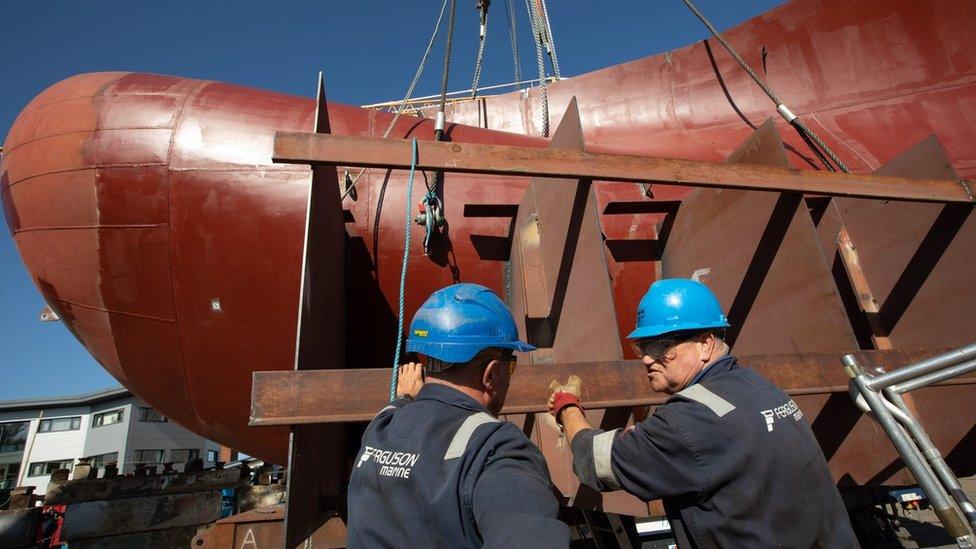
The bulbous bow being lifted into place on Hull 802
Delivery of the ships is now more than four years later than first contracted.
The initial price was £97m. To that, the current management has added a cost of £110m.
A further £5m or so due to Covid delays, at more than six months, is being met from outside that budget, and the Scottish government also lost £45m in loans that it sunk into the previous company.
Today, a 35-tonne 'bulbous nose' is being attached to the second of the ferries, known for now as Hull 802.
It is a replacement for the bow that was deemed unfit for purpose - designed under the previous, private ownership led by engineering tycoon Jim McColl.
The controversy surrounding the collapse of that business - the second administration in the past eight years - is not something Tim Hair wants to discuss.
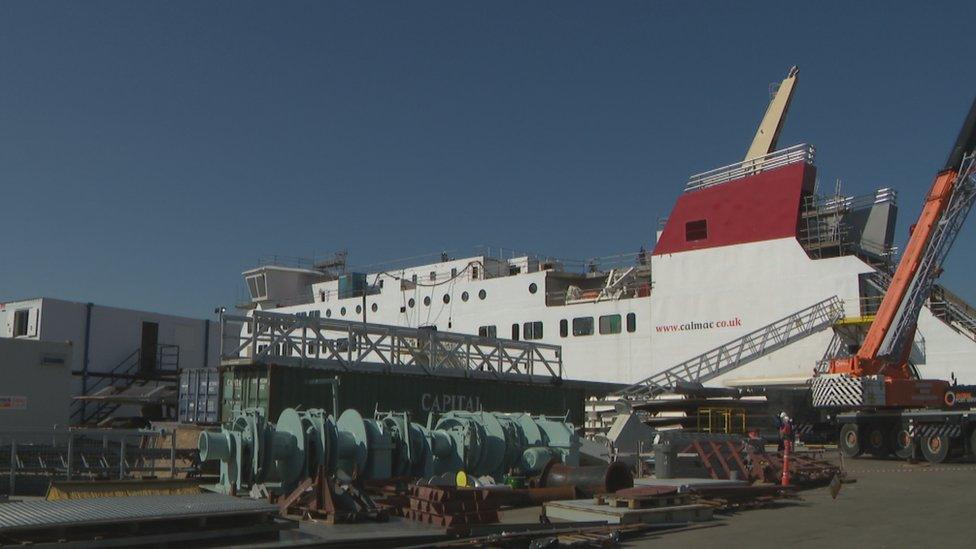
Mr Hair's message was that progress is happening
He has invited the media in to get the message across that there is progress being made, and it's visible to anyone who looks through the gates by the side of the main road to Glasgow.
Rumours of the boats remaining mired in engineering and design difficulties, and being doomed to never going into service on the intended Ardrossan-Brodick or Uig-Lochmadddy-Tarbert routes, are affecting confidence.
"This is a very visible part of the local community, and I understand the local community's concerns," he says.
"The bow going on is a very visible step towards the completion of 802. I want the local community to be able to see that work is going on, progress is being made, the ships will be completed and the yard has a future."
Other communities are watching from a distance and the message of reassurance is also aimed at them.
They are the islanders who face increasingly disrupted and unreliable ferry services due to breakdowns on CalMac's ageing ferry fleet.
The most recent is South Uist, losing its link with Mallaig and having to turn to the Oban route via Barra.
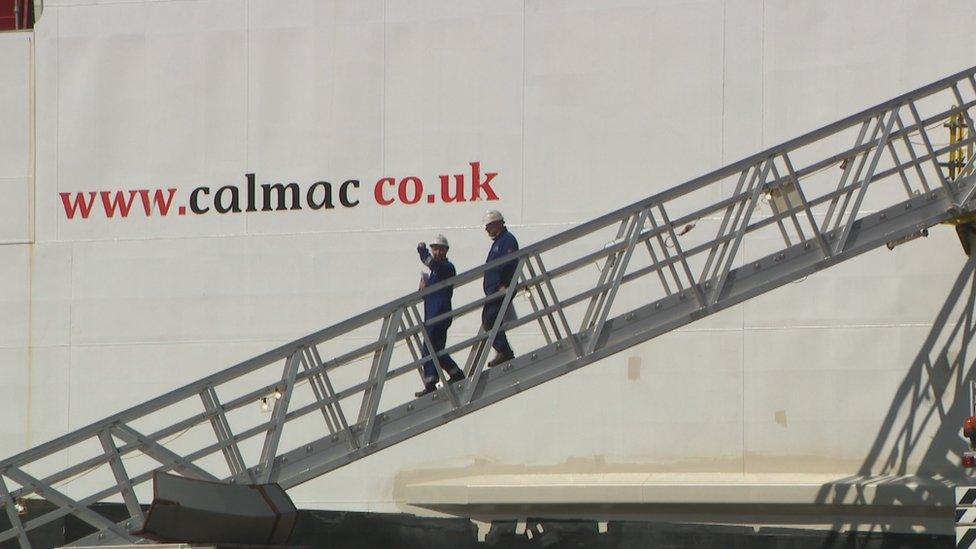
Calum MacAulay, owner of the Lochboisdale Hotel, by the Uist pier, says the problem is a "rolling disaster", which has been growing for years.
He cites two tour groups arriving next weekend. If they cancel because the ferry is off, he is £8,000 down, and that translates to fewer islanders employed.
It took more than a year from the start of the Ferguson turnaround for remedial work to be completed, including Covid disruption.
That included tackling rust where the coating on exposed steel had gone: re-painting: re-designing: scraping tonnes of mussels from Hull 801, with the name Glen Sannox, which is moored alongside the yard.

Ferguson went into administration following a dispute over the construction of two ferries under a £97m fixed price contract
That has required windows to be cut out of the superstructure - a task which is being done inside the fabrication hall for the second ship at a small fraction of the cost of adapting a ship once it is afloat.
The bow deck had to be replaced because engineers judged it did not have the strength to hold a taut bow rope.
Recruiting staff has been difficult, when there are jobs also in Glasgow's shipyards and beyond.
An agency had to be used to bring the necessary skilled pipe-fitting workers from eastern Europe.
In two years, staffing has gone from 285 to 471, plus 200 subcontractors, of whom 80 are from the agency, and more will be needed.
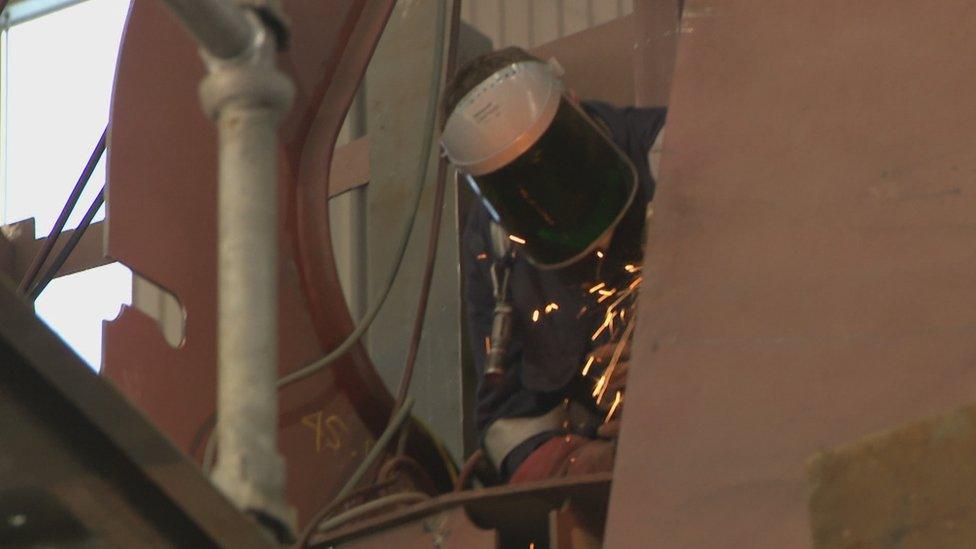
Last year, 24 apprentices started, and last week, 16 more went through induction.
Tim Hair says he is confident of meeting the schedule given to MSPs in June, within the £110m budget. He updates Holyrood later this month.
That means handover of the Glen Sannox between July and September next year, and launching Hull 802 next summer for handover by July 2023.
That launch brings new challenges. Because so much more of the ship is being built on the slipway, it will weigh more than any ship previously launched at the yard.
The riverbed is being surveyed to make sure it is deep enough.
Can Tim Hair guarantee those timings?
"There are problems that could emerge in the commissioning phase because of a lot of equipment on the ships that's been there for five years," he replies.
"However, we've done everything we can to minimise that."
Knowing what he now knows, would it not have made more sense to scrap these ferries and start again?
"I don't believe so," says the turnaround director. "The remit was to finish the vessels, but we had a short look at starting again.
"The conclusion back then was to scrap them, redesign and rebuild them would have been slower than completing the vessels. I think that was the right decision at the time."
It was the tendering that presented the biggest delay, and possible loss of the contract to a rival shipyard.
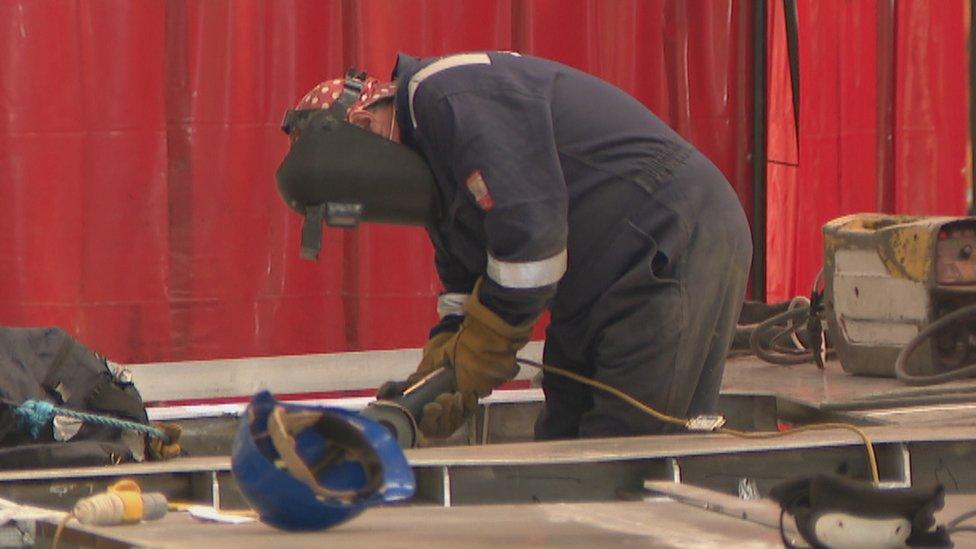
"To start again from scratch would almost certainly have prompted a re-tendering exercise. Those things take months, if not years," he says.
That brings us to the question of securing the yard's future, beyond the scandals and controversies of Hulls 801 and 802.
Could Ferguson Marine compete to win at least some of the 22 ships in the order pipeline for CalMac?
"It still has to some way to go," Mr Hair says.
"There's investment needed before the next vessels for upgrading our fabrication capabilities, and there's still work to be done to ensure our technical systems are consolidated.
"That has a bearing on efficiency. I'm confident we can get the yard to the place where we can be competitive by the time the next contract starts."
It would be an obvious fit for the Scottish government to steer as many of the new CalMac ships as possible towards the only Scottish yard geared up to build them.
But procurement rules may, post-Brexit, bring tough competition from more shipyards in Europe.
Tim Hair is "actively pursuing" those contracts, but does not want to rely on them.
"There are other vessels for which Ferguson's could be competitive, we're actively looking at everything," he says.
"It's public knowledge that Marine Scotland is starting to define new vessels."
It operates the fishery protection fleet.
"Trinity House and Northern Lighthouse Board (covering Britain's lighthouse and navigation hardware) are publicly saying they'll be sourcing vessels," Mr Hair says.
"Those are public sector and in the public domain.
"In the offshore wind market, there are service operation vessels, which would fit nicely with Ferguson's capabilities. There are other areas we're exploring, but I can't speak about them."
That does not include work for the next generation of Royal Navy warships.
The previous management of Ferguson's were part of a consortium bidding to win modules of those frigates, but the Inverclyde yard is now out of that picture.
Mr Hair was new to Scotland when he took on Ferguson's.
But being born on Tyneside and raised in Yorkshire as one of four generations of naval engineers, beginning his career on cruise ships, he says he understands the importance of shipbuilding on the Clyde.
"This is very close to my heart," he says.
"This brings me back to shipping, which was an important part of my early career. I'm really proud to be here, to work with the people in the yard, and to secure its future."
Related topics
- Published9 December 2020
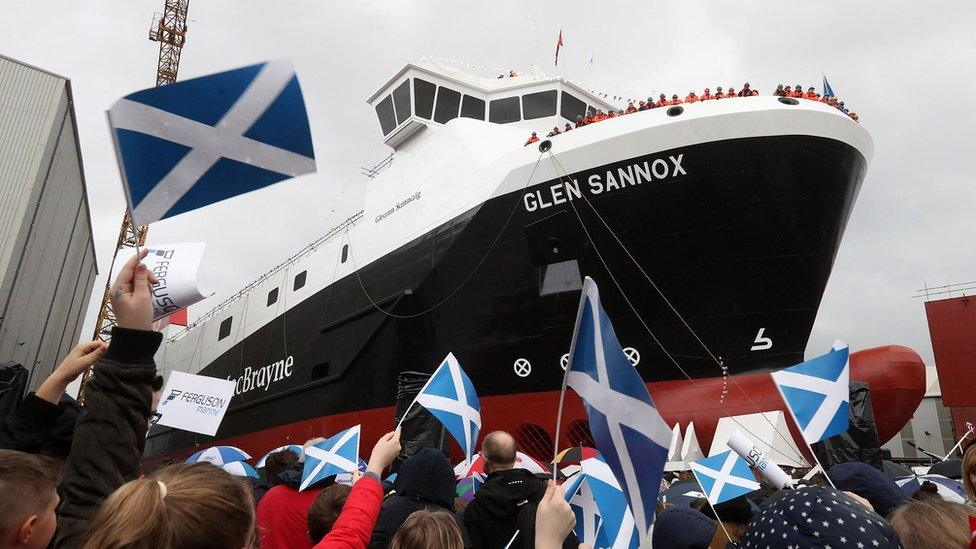
- Published25 February 2021
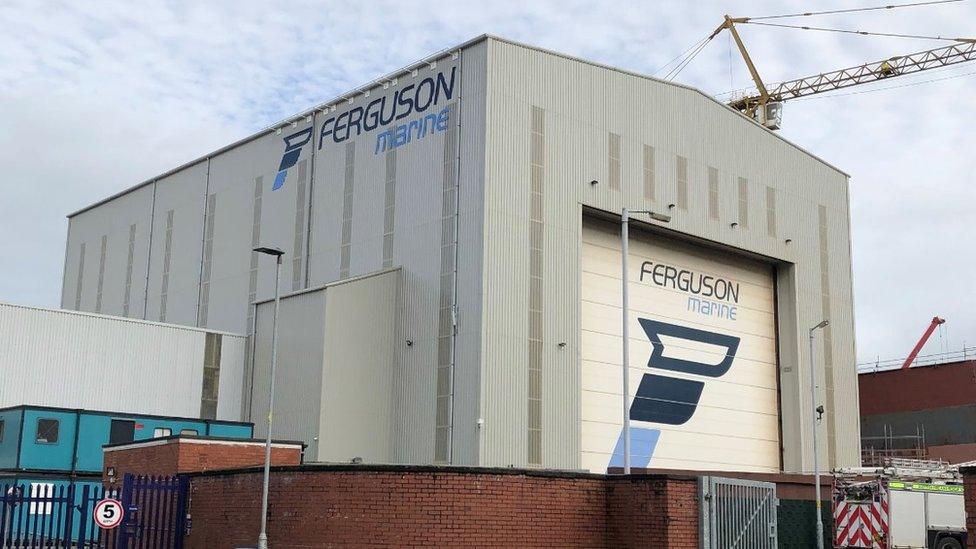
- Published30 April 2021
